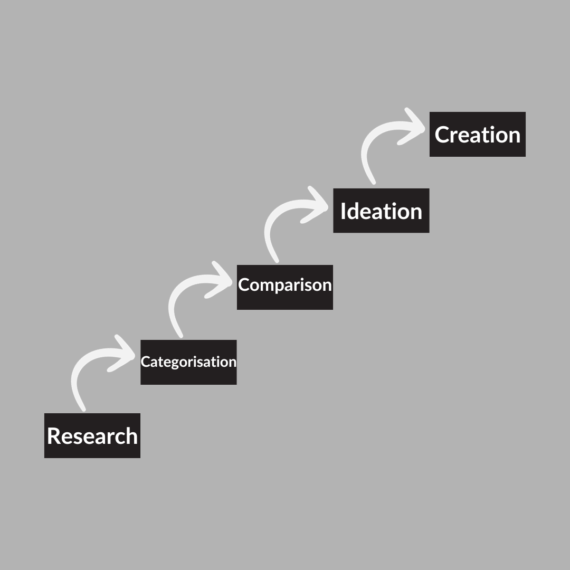
SEO plays a vital role in driving organic traffic and maximising online visibility. Therefore, understanding the importance of a content gap analysis is crucial for increasing your SEO performance. By identifying gaps in your content strategy and aligning it with user search intent and behaviours, you can optimise your website’s visibility, improve user engagement, and ultimately boost return on investment (ROI). In this article, we will look into why performing a content gap analysis is so important for the success of your SEO performance and how the resulting content recommendations can positively impact your organisation’s ROI.
We will also look into the best process for conducting a content gap analysis that provides an output to use within your ongoing content strategy and plan.

Uncovering hidden opportunities
Conducting a content gap analysis allows you to uncover hidden opportunities within your specific niche. By doing comprehensive keyword research, you can identify high-demand search queries and topics that your competitors might not be fully addressing. These terms can help you create targeted, valuable content that fills informational gaps, establishing your brand as an authoritative resource both for search engines and for your target audience.
You will also want to include longtail keywords within your research process. These terms tend to be much more niche, meaning they have a greater purchasing intent behind them. You can more easily target bottom-of-funnel users by creating content around such terms.
GET IN TOUCH WITH OUR EXPERT TEAM TODAY TO FIND OUT HOW WE CAN HELP.
Enhancing relevance and user experience
A content gap analysis based on SEO keyword research enables you to align your content with user search intent. By identifying the specific keywords and phrases your audience is using to find information, you can tailor your content to match their needs and expectations. This creates greater relevancy of your content in relation to user search queries. Ensuring you create highly valuable content that aligns with user search intent will lead to improved user experience, longer on-page engagement, and reduced bounce rates.
Optimising conversion opportunities
Through a content gap analysis, you also gain valuable insights into the keywords and topics that have a strong commercial intent. By targeting these keywords strategically, you can attract a qualified audience actively seeking products related to your business. This optimisation of conversion opportunities improves the likelihood of converting website visitors into customers, resulting in a higher ROI.
Understanding the gaps in your content strategy helps you identify the key touchpoints in the buyer’s journey where you can provide additional valuable content, nurture your target audience, and guide them towards making a purchase decision.
Driving competitive advantage
A content gap analysis allows you to evaluate and surpass your competitors’ SEO performance. By identifying the keywords and topics where your competitors are excelling and where they are lacking, you can gain a competitive edge. Fill the gaps in their content strategy by delivering more comprehensive content that addresses user needs more effectively.
This approach establishes your brand as a go-to resource in your industry and helps you outrank competitors in search results. By constantly monitoring and updating your content strategy based on the insights gained from your content gap analysis, you can maintain your competitive advantage and stay ahead of the curve.
This requires an ongoing effort to review competitor content as well as your own content strategy to ensure you are continually iterating and adding to your content.
Measuring ROI and continuous improvement
The content recommendations of a content gap analysis provide valuable data for measuring ROI and improving your content strategy. By regularly monitoring key performance indicators (KPIs) such as organic search rankings, website traffic, conversion rates, and engagement metrics, you can evaluate the impact of your content efforts.
Analyse the data to identify areas that require further improvement and fine-tune your content ideation and strategy accordingly. The iterative nature of content gap analysis enables you to make data-driven decisions, optimise your content to meet the ever-evolving user demands, and achieve a higher ROI over time.
Use our process to conduct an effective content gap analysis
Performing an SEO content gap analysis involves several steps to identify gaps in your content strategy and optimise your website’s visibility.
Here’s our step-by-step process to guide you through conducting an effective SEO content gap analysis:
Define your goals and target audience:
Clearly outline your objectives for the content gap, such as improving organic search rankings, increasing website traffic, or generating more leads.
Identify your target audience and understand their search intent, preferences, and pain points.
Conduct keyword research:
Use keyword research tools like Google Keyword Planner, Semrush, or Ahrefs to identify relevant topics and search terms related to your industry or niche.
Categorise & analyse your keyword research:
Categorise your keywords into topics and sub-topics to build out keyword clusters.
Analyse keyword search volume, competition, and commercial intent to prioritise your focus.
Assess current content:
Using your keyword clusters, perform a comprehensive site content audit
Identify the topics you have already covered and assess their performance in search rankings and user engagement metrics to understand the level of optimisation required for existing content.
Run a competitor analysis:
Identify your top competitors
Analyse their content strategy, keywords they are performing for, and the topics they have covered.
Identify gaps in their content coverage and areas where they are outperforming you.
Analyse the SERPs (Search Engine Results Pages):
Using Ahrefs of SEMRush, look at the SERPs to understand who is ranking on page 1.
Analyse those top-ranking pages to understand the type of content that search engines consider valuable.
Identify content gaps:
Compare the topics you have identified in your research with your current content and the content of your competitors.
Identify topics that are highly relevant to your target audience, which you have not yet covered within your content to get an understanding of the content creation that is required.
Prioritise content opportunities:
Prioritise the identified content gaps based on search volume, relevance, and potential impact on your goals.
Focus on keywords with niche topics and strong commercial intent to maximise conversion opportunities.
Develop a content strategy:
Create a content plan to address the identified gaps.
Develop high-quality, comprehensive content that satisfies user search intent for the identified keywords and topics.
Incorporate a mix of blog articles, guides, videos, infographics, and other content formats.
Look at how formats perform over time and tailor your content to those formats that your audience engages with most.
Monitor and measure results:
Implement the new content strategy and monitor its performance over time.
Track key metrics such as organic search rankings, website traffic, user engagement, conversion rates, and ROI.
Continuously measure and analyse the impact of your content creation and optimisation efforts.
Iterate and improve:
Regularly revisit your content gap analysis to identify new gaps and refine your content strategy.
Stay updated with industry trends, evolving search algorithms, and changes in user behaviours.
Continuously optimise and improve your content to meet changing user demands and maintain a competitive edge.
Remember, performing an SEO content gap analysis is an iterative process. Regularly revisit and update your analysis to stay ahead of the curve and ensure ongoing success in improving your website’s visibility and ROI.
In summary…
Performing a content gap analysis based on keyword research is a fundamental component of a successful SEO strategy overall. By identifying content gaps, aligning your content with user intent, and iterating on your content, you can improve user engagement, enhance relevance, and drive qualified organic traffic.
Additionally, the content recommendations of the analysis enable you to gain a competitive advantage and continuously refine your content strategy. The use of a content gap analysis (if done correctly) can unlock the potential for long-term SEO success and increased commercial performance for your organisation.
LET’S CONNECT
If you would like to keep up to date with our latest news, resources, and more then subscribe to our mailing list here




